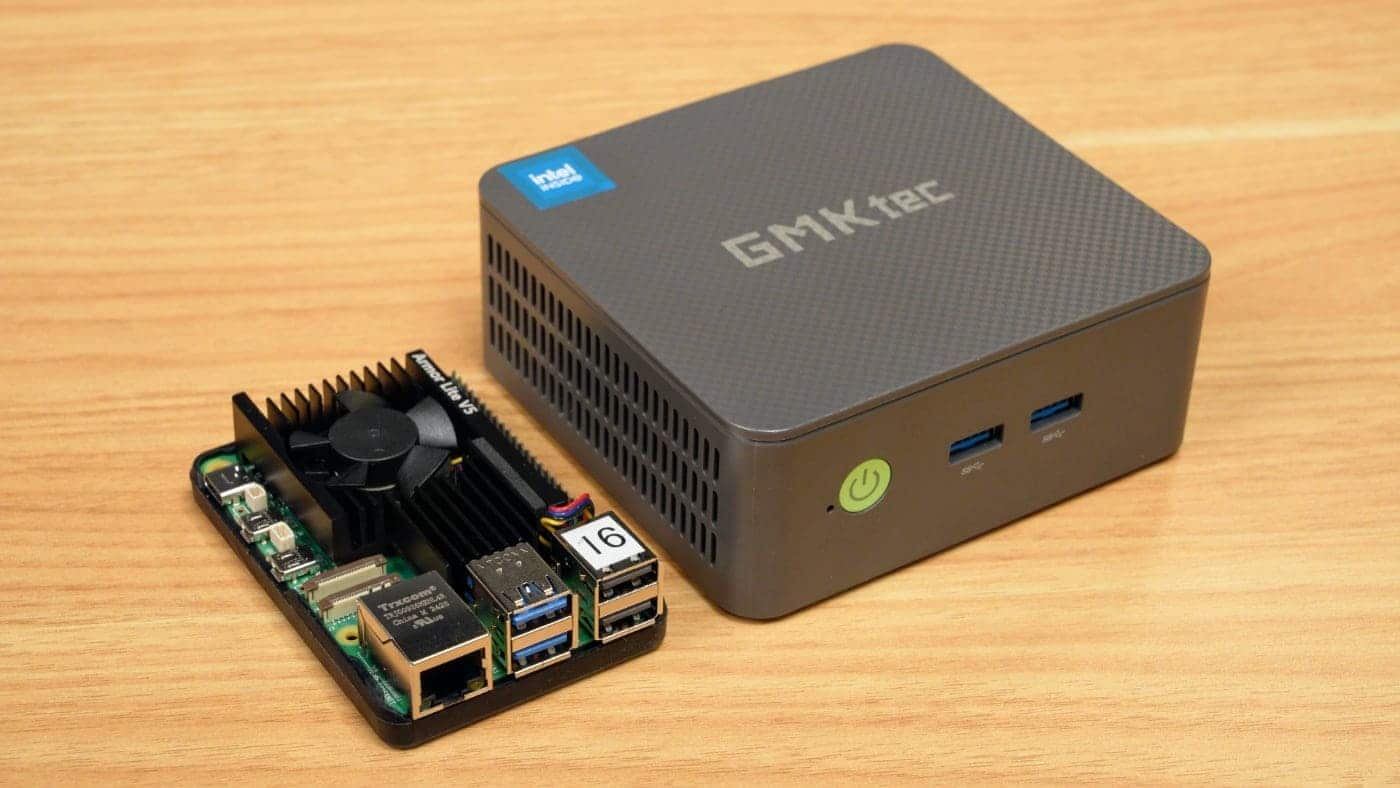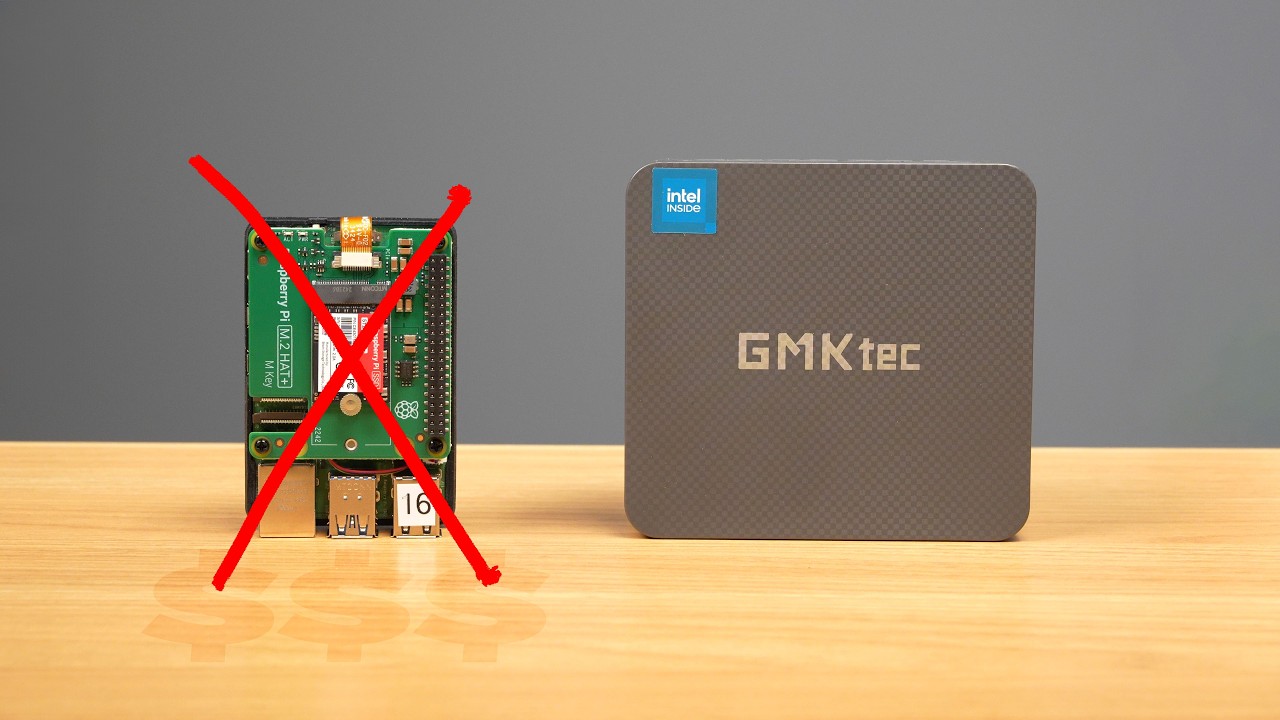The low-cost computing market is experiencing a period of change. For over a decade, the Raspberry Pi was the undisputed benchmark for educational projects, makers, and even lightweight home servers. But the emergence of mini PCs based on processors like the Intel N100 and N150, which are more powerful and increasingly competitive in price, has shaken things up.
Today, many ask a clear question: Does a mini PC with an Intel N100 offer more value than a Raspberry Pi 5? The answer, while tempting, is not absolute. It depends on the use case, budget, and user priorities.
An unavoidable showdown: Raspberry Pi 5 versus Intel N100/N150
At one end is the Raspberry Pi 5, available in configurations up to 16 GB of RAM and starting at just $50 for the 2 GB version. Its philosophy is that of a single-board computer (SBC), compact, modular, and backed by a huge community.
On the other end are the mini PCs based on Intel N100 or N150, such as the GMKtec NucBox G3 Plus, which with 16 GB of RAM and built-in SSD storage, hover around $159. Although slightly more expensive overall, they offer an experience closer to a traditional desktop PC.
Performance: who wins in practice?
Benchmarks present a clear picture:
- The Intel N150 delivers between 1.5 and 2 times more performance than a Raspberry Pi 5 in intensive computational tests like High Performance Linpack.
- However, the Raspberry Pi 5 is more energy-efficient, achieving more work per watt in idle mode and light loads.
The explanation lies in architecture: while the N150 is built on a 10 nm process (Intel 7), the Pi 5’s ARM BCM2712 chip is manufactured in 16 nm but with a design more optimized for efficiency.
In other words: the N100/N150 outperforms in raw power, but the Raspberry Pi 5 makes better use of each watt consumed.
Real cost: which option is cheaper?
This is where the debate gets complicated.
A Raspberry Pi 5 with 16 GB, equipped with essential accessories (512 GB NVMe SSD, 27W power supply, active cooling, RTC battery, and case), costs around $208.
A NucBox G3 Plus with Intel N150 and 16 GB goes for about $159 with comparable specs.
In this scenario, the Intel mini PC appears more affordable. However, the Raspberry Pi starts with a significant advantage at its basic models, with projects possible from $50 for simple applications.
Additionally, in the secondhand market, used enterprise mini PCs (Lenovo, HP, Dell) offer even more value, with 7th or 8th generation processors at very low prices. Yet, comparing new to used isn’t entirely fair: Raspberry Pi maintains dominance in ultra-cheap computing.
Energy consumption: efficiency versus muscle
The idle consumption makes a big difference:
- A mini PC with N150 consumes about 10-12 W at idle.
- A Raspberry Pi 5 stays at 3-4 W.
The annual electricity cost difference may be around $10-20, which is marginal for home users but crucial for solar projects, remote installations, or mass deployments.
Under maximum load, the N150 consumes more but also provides significantly more performance.
Ecosystem and software compatibility
The Raspberry Pi 5 stands out for its community and educational ecosystem:
- Thousands of tutorials, accessories, and HAT modules.
- Optimized support for Raspberry Pi OS and derivatives.
- Educational and maker projects leveraging its versatility.
Conversely, mini PCs based on Intel processors have the major advantage of universal compatibility with x86 software:
- Operate with Windows and Linux without limitations.
- Support business and legacy applications.
- Better virtualization and container support.
In summary: the Pi 5 excels in modularity and community; the N100/N150 in compatibility with desktop and productivity software.
Use cases: what to choose based on the scenario?
- For education, IoT, and maker projects: Raspberry Pi 5. Its low power consumption, flexibility, and extensive documentation make it the most logical choice.
- For homelabs, light virtualization, or basic desktop use: Intel N100/N150. They offer better multitasking power and x86 applications.
- For remote projects or renewable energy setups: Raspberry Pi 5, thanks to its low consumption and PoE support.
- For those wanting to replace an office PC or thin client: Intel N100/N150, with greater versatility in professional environments.
Summary comparison
| Feature | Intel N100/N150 (e.g., NucBox G3 Plus) | Raspberry Pi 5 (16 GB) |
|---|---|---|
| Raw performance | 1.5 – 2x higher | Lower, but stable |
| Energy efficiency | Less | Much higher |
| Idle power | 10-12 W | 3-4 W |
| Price with 16 GB + SSD | ~159 USD | ~208 USD |
| Software compatibility | Windows + Linux x86 | Linux ARM + maker ecosystem |
| Expansion / accessories | Limited | Very extensive |
| Ideal use | Light desktop, homelab | IoT, education, edge computing |
Beyond numbers: bicycle or car?
Comparing a Raspberry Pi to an Intel mini PC is, in some ways, like comparing a bicycle to a car. The bicycle is cheaper, lighter, and more efficient but has clear limitations. The car consumes more fuel but allows traveling longer distances and carrying more load.
The real value depends on the context:
- For a child learning Python or a maker building a robot, the Pi 5 remains unbeatable.
- For a small office needing a cheap mini PC with Windows, the N100 makes more sense.
Conclusion
The debate between Intel N100/N150 and Raspberry Pi 5 does not have a single winner. What’s clear is that the market has matured: there’s no longer a single low-cost benchmark but several solid options tailored to different profiles.
Likely, both will coexist: Pi boards for education and creative projects, and Intel mini PCs for homelabs, light desktops, and professional environments seeking a balance between cost and performance.
Frequently Asked Questions (FAQ)
Is an Intel N100 more powerful than a Raspberry Pi 5?
Yes, in most benchmarks, the N100/N150 doubles the performance of the Pi 5.
Which consumes less energy?
The Raspberry Pi 5, especially in idle, with significant differences in remote or limited-energy environments.
What is cheaper in practice?
The Pi 5 starts at $50, but with comparable accessories, it can be more expensive than a mini PC N150. Used Intel equipment tends to be the most cost-effective overall.
Which has a better support community?
The Raspberry Pi has a huge, well-documented community. Intel mini PCs rely more on manufacturer support and the traditional PC ecosystem.


